AUGUSTA (Day 2 - part 5)
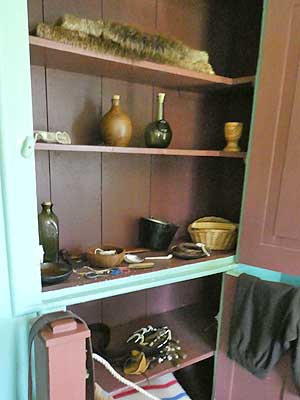
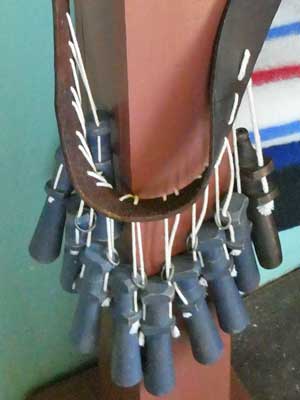
A closet with sample wares of the time. ... A belt with black powder paper cartridges. This was an upgrade from the old gun powder flask since each dose was pre-measured. Soldiers were required to have at least 4 teeth to be in the military, in order to rip open the powder packets.
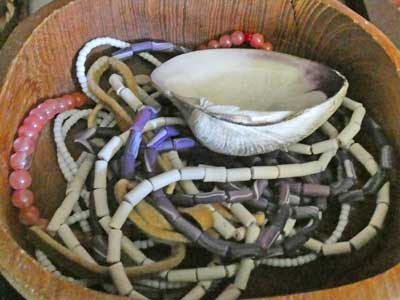
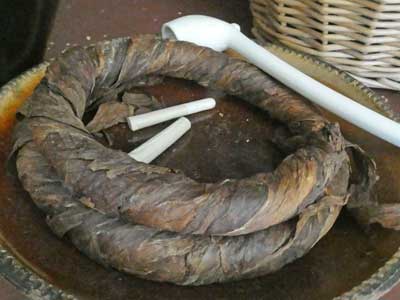
Wampum ... and a tobacco twist with pipe
Wampum was the word for small beads made from oyster shells and strung together to be worn as decoration or used as money.
Historically, tobacco was transported by twisting the dried leaves into a thick, coiled rope. These bundles were covered in canvas and could weigh as much as 100 pounds. By the 1800s, smaller twists were made which could be sold to consumers. Eventually, tobacco was shipped in barrels.
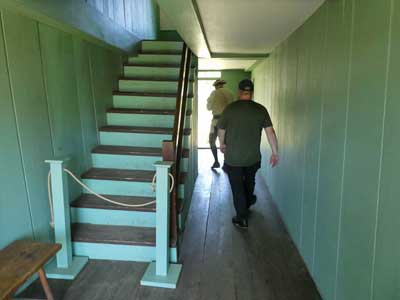
Walking through the building to the next room
The barracks room...
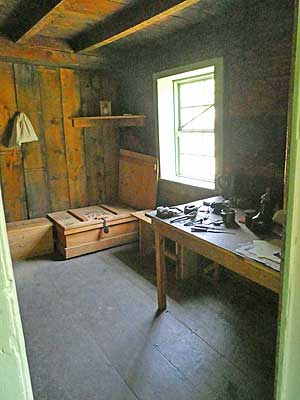
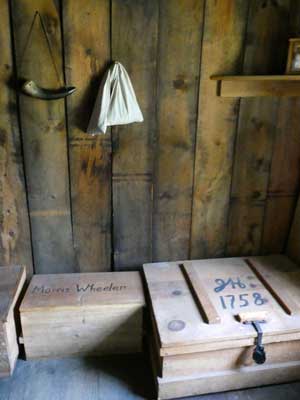
Originally, many of these rooms didn't have windows, for safety reasons. But once the war ended in 1863 and the building was converted into a store, more windows were added.
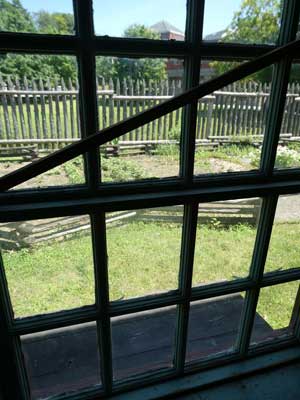
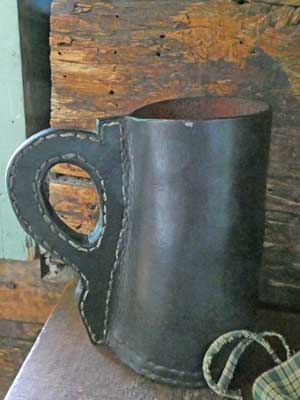
A view outside at the garden. The men would also hunt and fish for food.
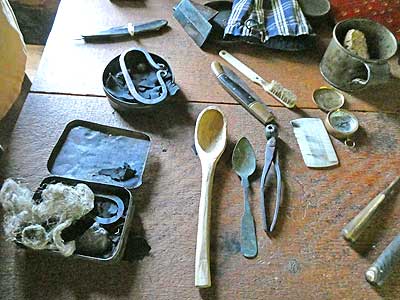
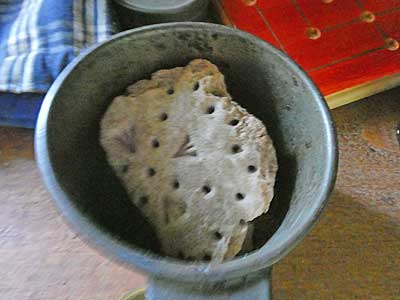
Typical tools and utensils ... and some hardtack
Hardtack was a dense, hard, unleavened biscuit or cracker made from flour, water and sometimes salt. It served as a long-lasting and inexpensive survival food for sailors, soldiers and pioneers during long trips. If stored correctly, it could last for decades. Holes were poked in the dough to help it bake evenly and prevent puffing. It was baked for several hours at low temperatures.
Because of its extreme hardness, it was almost impossible to eat straight. It had to be softened by either soaking it in a liquid such as coffee or brine, fried in bacon grease or pork fat, ground into a powder and used to thicken stews, or dunking it. During the Civil War, soldiers would sometimes eat their rations in the dark to avoid seeing the weevil larvae that often infested the improperly stored biscuits.
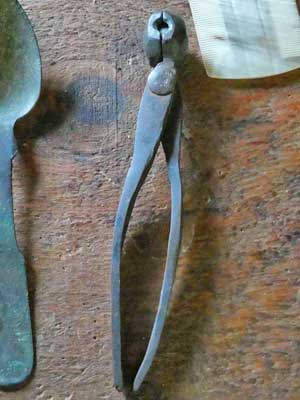
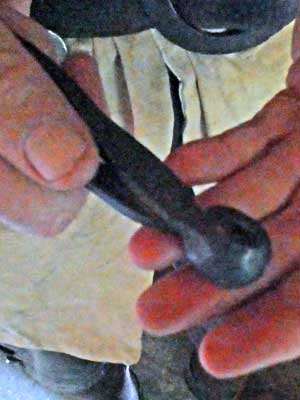
A scissor-style lead bullet mold. Before the invention of cordite (a smokeless propellant which replaced black powder) in the 1880s, most rifle bullets were made of soft lead, which expanded, fragmented or deformed upon impact, causing terrible wounds and often leading to death.
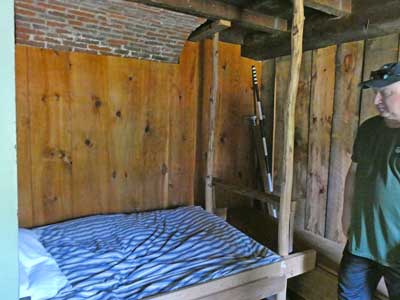
It was three men per bed. The soldiers ranged from 16 to 60 years old. Regulations required them to shave every 3 days.
We moved on to the old store...
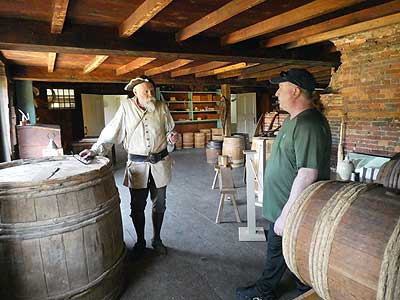
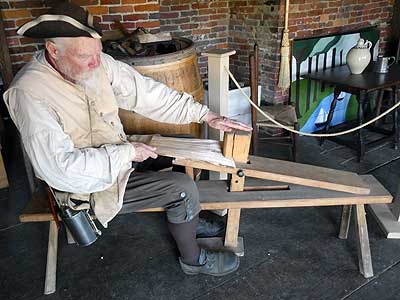
Casks came in different sizes, including hogsheads (up to 66 gallons) and port pipes (up to 172 gallons). They were easily moved by rolling. .... Greg demonstrated how to make a shingle on a shaving horse. Shingles could be traded for tobacco, cod, and other products from along the Atlantic coast (not England).
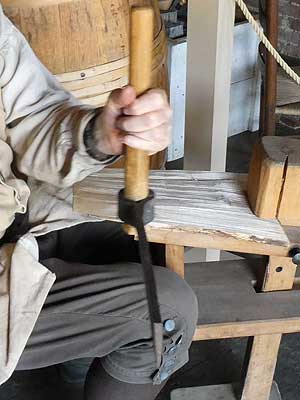
The froe is a traditional wood-working tool.
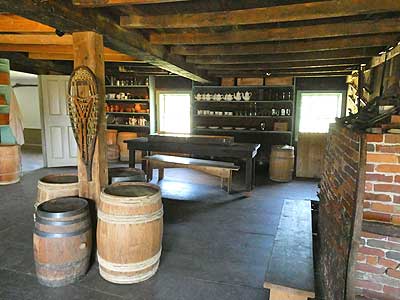
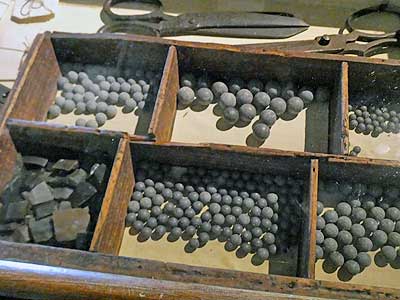
(right) Different bullet sizes
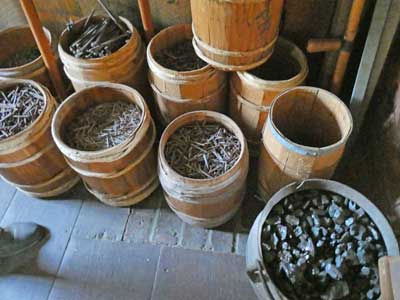
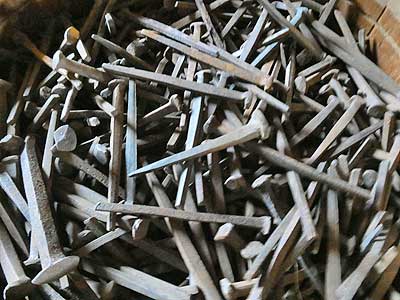
Barrels of coal and nails
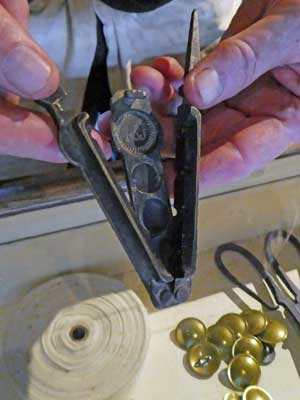
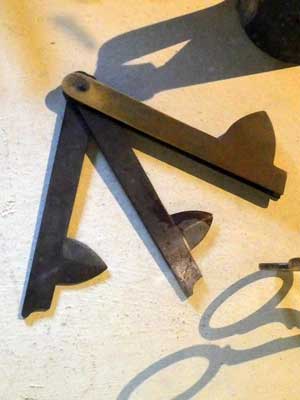
A button mold ... and a fleam (a handheld instrument used for bloodletting)
At the age 67, George Washington got a severe throat infection, possibly from not changing out of wet clothes after several hours of riding in bad weather. But is that what actually killed him? It's suspected that his treatment caused more harm than good. After taking a pint of his blood, he didn't get better. So the doctors promptly took another 4 pints of blood! Much to their confusion, he continued to get worse and eventually died.
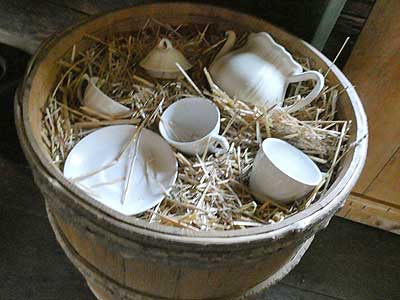
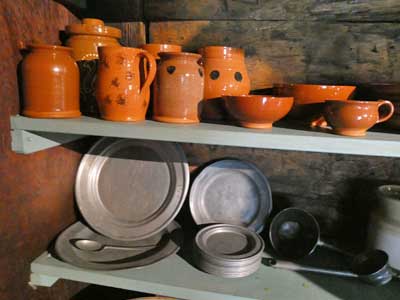
Cream ware ... red ware (clay) and pewter
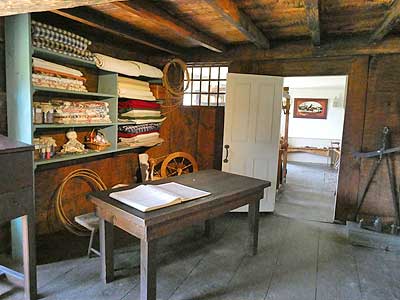
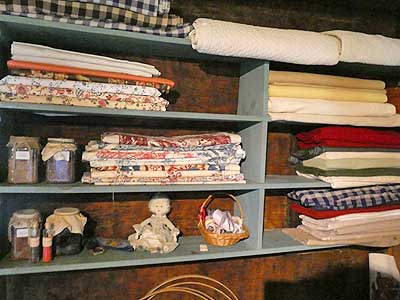
Bolts of cloth
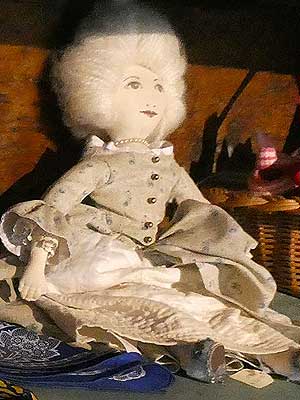
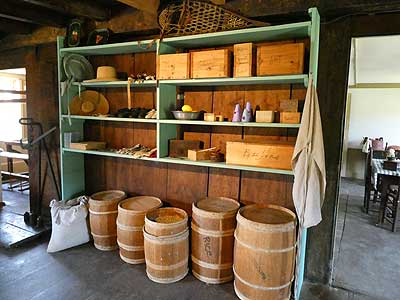
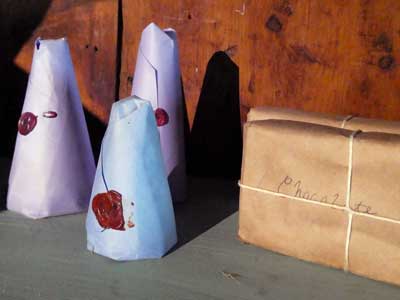
(right) Cones of sugar and a brick of chocolate
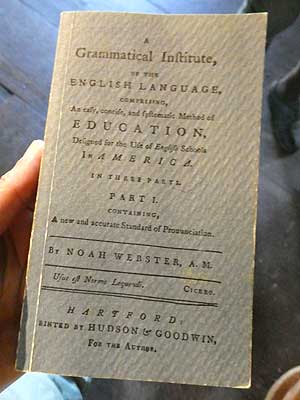
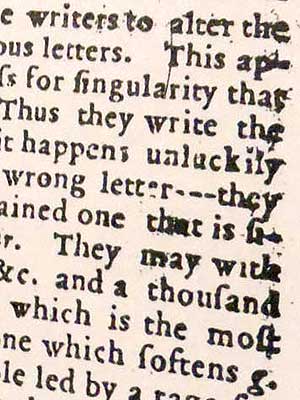
An old English language book
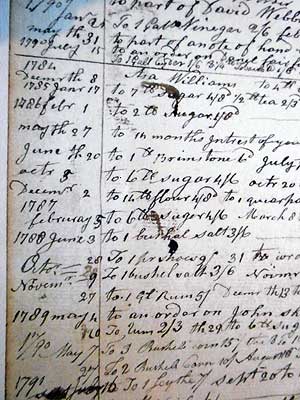
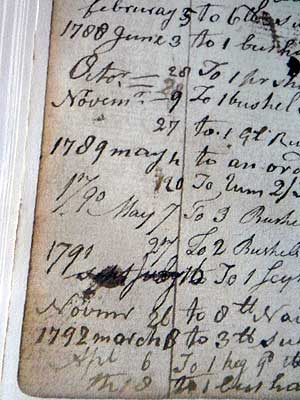
An old account book from the Howard store
Attached to the store was another room set up for making cloth.
There are many steps in the process of making cloth... going from sow to sew. The raw fibers (such as cotton) must be cleaned, combed and dried. These are twisted and spun into yarn. Yarn is either woven (such as on a loom) or knitted into fabric, which can then be dyed, cut into pieces and then sewn together to make clothes.
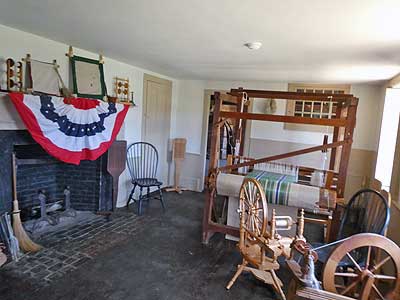
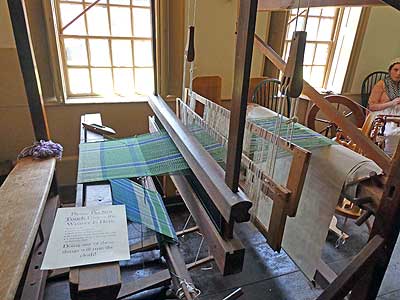
A large barn loom
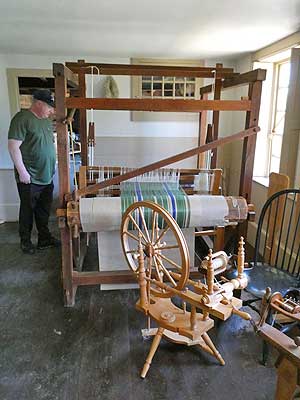
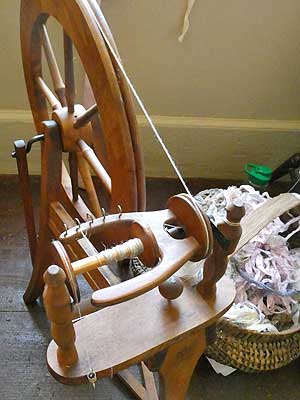
Spinning wheels twist fibers into yarn.
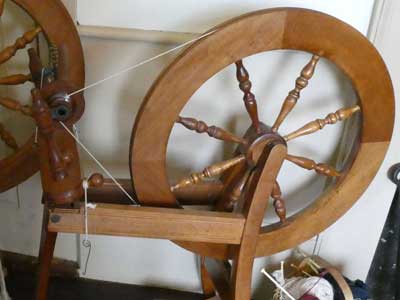
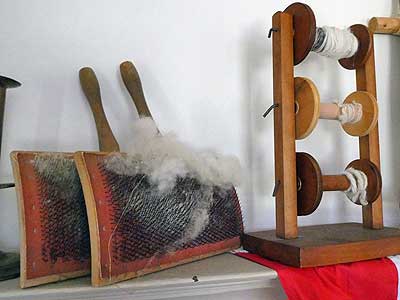
A spinning wheel ... Hackles and spools of yarn
Hackling (or heckling) is one of the steps for preparing flax fibers to be spun. As the flax is pulled through the comb, its fibers are split, straightened and clean. A wool card does the same thing for wool.
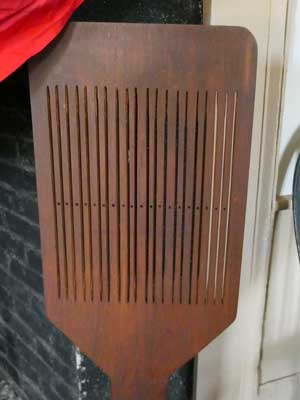
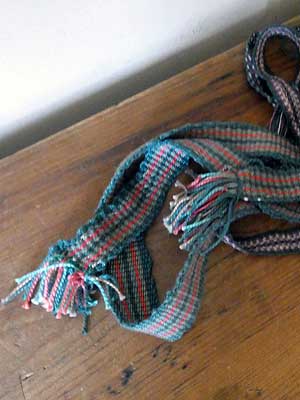
Piece from a tape loom ... used for making narrow bands of cloth
We entered the kitchen.
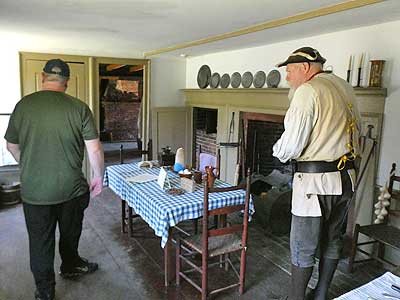
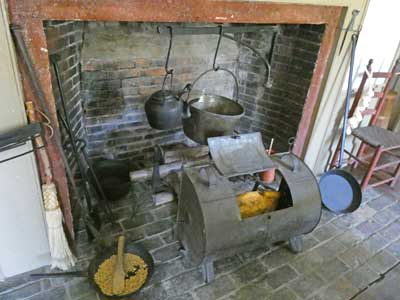
All of the kitchen appliances were on legs. This was to allow for hot coals to go underneath them. This work came with the risk of women's long skirts catching on fire.
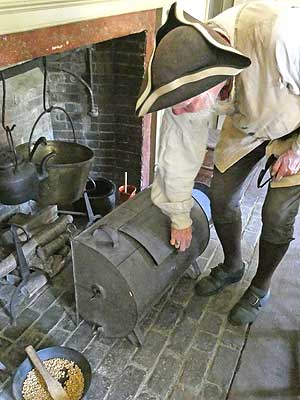
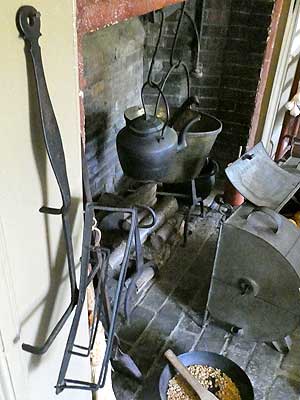
Greg opens the meat roaster. ... The device hanging on the wall was for making toast.
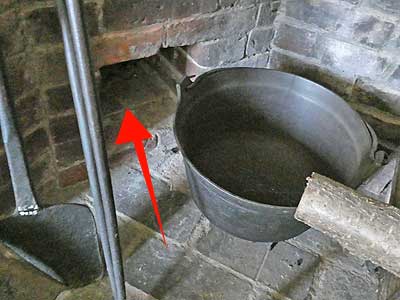
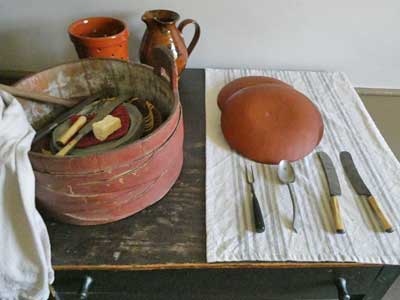
The hole in the back was for sweeping out the ashes, which would then fall down a shoot into barrels below. Ash was mixed with water to form lye, which was used in the making of soap. ... Washing dishes
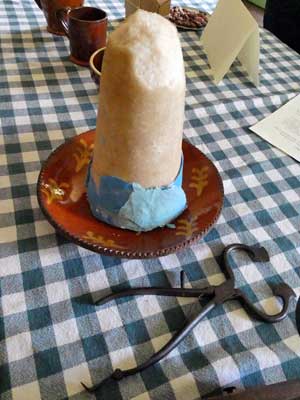
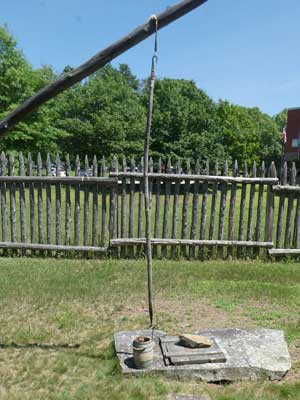
A cone of sugar plus the tongs used to break of small pieces. ... The well outside.
return • continue

